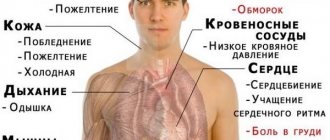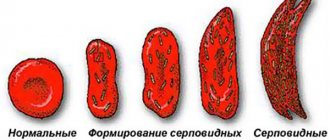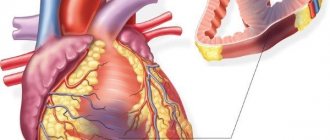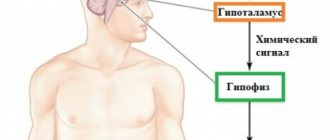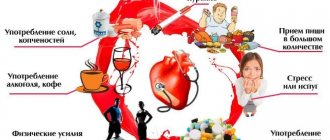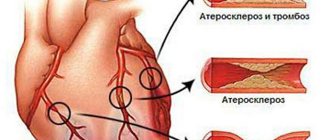There are many different blood-related diseases in the world. One of these is anemia. This disease is considered a polyetiological disease that occurs due to internal and external influences on the composition of the blood. Most often, people believe that the main signs of the disease are weakness and dizziness. But this is not so, these symptoms are the initial signal of the development of the disease. Next, pathological processes occur in the body that lead to circulatory disorders. In this regard, very often patients ask the question: “Is it possible to die from anemia?” In order to get an answer to this question, you need to understand why such disruptions occur in the body and how to prevent them.
How to treat hypoxia?
All forms of anemia have one thing in common - they can lead to a condition called tissue hypoxia or oxygen starvation. In this case, the vital organs that normally consume the maximum amount of energy for their work will suffer the most. After all, cells need oxygen to produce calories.
Oxygen deficiency in the absence of treatment first leads to a reversible suspension of the functioning of all metabolic processes, and in the final stage - to irreversible consequences.
A person with hypoxia constantly needs additional oxygen, but with anemia it is not absorbed
Hypoxia threatens the heart, blocks the work of liver cells and kidney filtration, accumulates in muscles and tissues under-oxidized products, toxins and components that poison the brain.
Hypoxic coma in a severe stage causes encephalopathy with loss of neuronal function. The consequences are irreversible and lead to death. In the development of anemia, not only a lack of oxygen plays an important role, but also deficiency conditions.
Types of anemia
There are several types of anemia, and each of them has its own causes and symptoms:
- Iron deficiency anemia (ICD code - 10) is a common type of disease. It occurs mainly due to poor nutrition or after injuries that provoked large blood loss.
- Pernicious anemia occurs in the body due to a lack of vitamins, namely B12. A common cause of the disease is congenital gastric atrophy. With this diagnosis, a person has poor absorption of vitamin B12.
- Hemolytic type - manifests itself in people with abnormalities in the functioning of the brain, since it is not able to produce the required number of cells.
- Hereditary thalassemia is the most severe form, which is caused by genetic disorders.
All these types of diseases are dangerous for the body in their own way, since iron deficiency negatively affects all organs. With any disease, there is a danger to life if treatment is not started on time. Therefore, the question “Can you die from anemia?” remains relevant. There is always a risk; if a period of hypoxia sets in, recovery is much more difficult, but still possible. The main thing is to follow all the doctor’s instructions.
Is it possible to live without iron?
The share of iron deficiency anemia in the overall incidence of anemia reaches 90%. About 2/3 of all dietary iron is spent on the synthesis of heme, part of the protein-mineral compound hemoglobin. The other third goes to the formation of enzymes necessary for the liver. The body's reserves are small.
Lack of iron from food deprives red blood cells of hemoglobin, the only substance that can bind oxygen molecules.
Iron deficiency initially disrupts a person’s ability to work, reduces attention, and in a severe stage leads to an anemic coma.
Main signs of the disease
Starting from the second stage, symptoms may be as follows:
- frequent fainting;
- rapid pulse;
- easy fatigue;
- frequent dizziness;
- general weakness of the body;
- irritability, sudden mood swings;
- pain in the thoracic region;
- memory impairment, absent-mindedness;v
- involuntary urination;
- dyspnea;
- change in the taste perception of food - parageusia;
- changes in the functioning of the digestive organs.
May appear due to polyhydramnios
Anemia during pregnancy is also reflected in a woman’s appearance:
- palms begin to peel and turn yellow;
- cracks appear on the lips;
- nails become brittle;
- hair begins to fall out;
- swelling of the legs appears;
- the skin turns pale.
Consequences for the child and treatment
- perinatal mortality rates are increasing;
- hypoxic brain injury in more than 35% of cases;
- fetal growth retardation (FGR);
- development of infectious and inflammatory diseases in more than 37% of cases;
- hypoplasia – underdevelopment of the amnion, chorion;
- primary placental insufficiency (PI);
- placenta previa;
- low placentaria (placental attachment);
- the risk of miscarriage increases;
- discharge of amniotic fluid;
- stillbirth;
- premature birth, spontaneous miscarriage;
- During childbirth, asphyxia may occur in the newborn;
- fetal anemia.
Anemia of the 1st degree during pregnancy is well treated with non-drug methods:
- following a diet that should contain many useful elements, including protein and iron;
- It is recommended to use therapeutic nutrition in order to increase the protein content in the body; for this it is necessary to consume products such as hematogen.
The main stages of treatment in hospitals are as follows:
- restoration of normal hemoglobin content in the body in order to relieve anemia;
- restoration of the main source of iron reserves in the body;
- Maintenance therapy is aimed at maintaining all sources of iron (in order to restore deficiency in mild anemia, the average daily dose of iron should be from 60 to 100 mg; for more severe disease, a woman during pregnancy should adhere to a daily dose of 100 to 120 milligrams useful substance).
In a condition where iron absorption is impaired, or if a pregnant woman has a severe form of anemia and requires adjustment of the level and immediate replenishment of iron deficiency in the body, hospitalization is necessary.
Donate blood for hemoglobin
The administration of iron supplements through an IV is prescribed if the woman is intolerant to the drugs she is taking.
Application of traditional medicine
In any case, before using one method or another, you need to consult a specialist and find out if there are any allergic reactions to the main ingredients.
For the first recipe you will need:
- carrot;
- beet;
- radish;
- container (preferably dark, glass).
- Grate the root vegetables on a fine grater.
- Squeeze out their juice.
- Pour everything into a bottle.
- Close loosely (to allow liquid to evaporate).
- Place in the oven for 3 hours on low heat.
- Take one tablespoon several times a day before meals for at least three months.
Need to eat more vegetables
To prevent and treat gestational anemia, a woman during pregnancy must use the second prescription. Required ingredients:
- Pour water over oats (5 tbsp/1 tbsp), boil until thick jelly.
- Strain the resulting broth, add the same amount of milk (about 3 cups).
- Boil again, add 4 teaspoons of honey to the resulting mixture and boil.
- Take warmed or chilled. Use within one day.
For the third recipe you will need:
- Fill a jar (1 liter) with dry wormwood herb.
- Pour in vodka (diluted pharmacist's alcohol will do).
- Let it brew for 3 weeks in a dry, dark place.
- Take the tincture once a day for three weeks in a row.
- Take a break for 2 weeks and repeat the course again.
- When taking, dilute 1 drop of tincture in a thimble of water.
What does a lack of vitamin B12 and folic acid lead to?
A deficiency of vitamin B12 and folic acid in the body leads to impaired DNA synthesis in blood cells, difficulty in their division, and destruction of the myelin sheath of nerve fibers. Patients experience the following serious consequences:
- mental change;
- hallucinations and delusions;
- decreased physical activity;
- liver dysfunction.
Anemia is complicated by bleeding, memory impairment, and decreased skin sensitivity.
Treatment with folk remedies at home
Before treating anemia with folk remedies, it is recommended to consult your doctor. Not all forms of the disease are amenable to alternative methods of therapy. In most cases, it is recommended to combine folk methods with traditional ones.
Healers recommend including in your diet daily:
- pomegranate;
- buckwheat;
- beets;
- carrot;
- honey with nuts;
- rose hip;
- dried fruits.
To get rid of the disease, you can try this medicine:
- greens or dill seeds;
- milk.
Dill is poured with hot milk and kept on low heat for 10 minutes. Drink 1 glass a day, divided into 3 doses.
Another recipe will help if chronic anemia has been diagnosed. Have to take:
- 25 g black currant berries;
- 25 g rose hips;
- 15 g nettle leaves;
- 600 ml boiling water.
The ingredients are poured with hot water and left for 2 hours. The entire volume is divided into 3 doses.
Rosehip is a good remedy for the treatment and prevention of anemia
How do hereditary anemias behave?
Aplastic, or sickle cell, anemia is inherited. Associated with improper synthesis of the protein part of hemoglobin. Accompanied by severe hemolytic crises, which occur with clinical signs of thrombosis of the blood vessels of the brain and heart, severe impairment of liver function, and acute trophic ulcers.
Diseases are caused by altered DNA structure of genes
In most cases of aplastic anemia, the causes have not yet been established. Genetic changes are very difficult to diagnose, and the disease is difficult because it is associated with the destruction of hematopoiesis. The disease is dangerous if it is inherited by offspring. Therefore, before conceiving, future parents should consult with geneticists.
Any infection poses a significant danger to patients. Against the background of anemia, it quickly leads to sepsis and death.
When should you pay attention to your health?
Any healthy person should undergo a minimum preventive examination once a year, which includes a general blood test.
If the hemoglobin level is below 120 g/l, you should consult a physician.
Anemia with a hemoglobin level above 100 g/l is considered mild and does not pose a serious danger to the body at the time of detection, but still requires correction. If the hemoglobin level is 70-80 g/l and below, it is necessary to take urgent measures, because This condition poses serious threats to health, and sometimes life!
For the reasons for the development of anemia, the leading position is occupied by iron deficiency anemia - every 12th person in the world suffers from iron deficiency anemia, and among all anemias, iron deficiency anemia reaches 80% in frequency.
What is associated with the development of iron deficiency anemia? The reasons may be an elementary deficiency of iron in food, impaired absorption of iron in the gastrointestinal tract (for example, with gastritis with low acidity) and chronic bleeding.
Dangers for the expectant mother
For women of childbearing age who want to have healthy offspring, it is necessary to take into account the likelihood of complications during pregnancy due to anemia and the degree of threat to the health of the expectant mother.
Anemia is expected in the second and third trimester. It is associated with the physiological development of the placental circulation. If abnormal blood counts are detected, correction is carried out with diet and medications that are safe for the mother and fetus.
Complications of untreated anemia may include:
- miscarriage or premature birth;
- severe toxicosis;
- placental abruption and bleeding;
- weakening of labor.
In the postpartum period, the mother is threatened by the lack of milk or its deficiency.
Danger of disease for pregnant women
The development of anemia during pregnancy is especially dangerous. It can negatively affect the growth and development of the fetus. An increase in blood volume and the need to supply oxygen to two organisms at once leads to a physiological lack of iron in the blood. And poor nutrition and poor lifestyle aggravate the condition. If anemia is not treated during this period, the child may have the following complications:
- intrauterine growth retardation;
- improper formation of the nervous system;
- amyotrophy;
- birth with a low Apgar score;
- prematurity;
- defects of internal organs.
During childbirth, a woman with anemia experiences weakness of the uterine muscles and poor cervical dilatation. As a result, you have to resort to a caesarean section or inject oxytocin to stimulate labor. With severe anemia, fetal death may occur in the womb.
Important information: How to treat anemia in adults and a list of the best iron preparations (medicines) (iron-containing)
How does anemia threaten the fetus?
Maternal anemia transmits a mandatory threat to the fetus. The hypoxic state contributes to disruption of the intrauterine formation of internal organs. Thus, children subsequently appear with congenital defects.
Premature birth contributes to the birth of a baby with developmental delays, unprepared for independent feeding and breathing
Nursing premature babies requires complete isolation and sterility. The most terrible complication is the birth of a stillborn child.
Symptoms of anemia
For those who have a question about “Is it possible to die from anemia?”, the answer is simple: “Yes, you can,” if you do not consult a doctor. But in order to identify the disease, you need to know its symptoms. In fact, the first signs become noticeable only at the second or third stage of development. In this case, a person experiences the following symptoms:
- fast fatiguability;
- constant feeling of fatigue;
- dizziness;
- fainting;
- pale skin;
- labored breathing;
- increased heart rate;
- poor appetite;
- memory impairment.
All these signs are ambiguous, as they can also appear in other diseases. In any case, in this condition you need to contact specialists for a full examination.
How does child development suffer?
Hereditary anemias are detected in a child at an early age and often accompany congenital developmental anomalies. The child’s life completely depends on the possibilities of a bone marrow transplant and protection from infection.
It is known that maternal anemia contributes to the occurrence of frequent infectious diseases, diathesis and allergic manifestations in a child under one year of age. Due to a tendency to enterocolitis, the child does not gain weight and lags behind his peers in development.
For children of early school age, anemia is associated with:
- decreased academic performance;
- lack of proper attention in class;
- drowsiness.
Dangerous consequences
Iron deficiency anemia, left unchecked, impairs quality of life, impairs the functioning of the immune system, makes a person more vulnerable to disease and infection, and increases the risk of developing complications affecting the heart or lungs.
Article on the topic
Anemia epidemic. Should you give up red meat? For example, due to oxygen starvation of the heart muscle cells, its contractile function is impaired. If hypoxia affects the uterus and placenta (in a pregnant woman), this leads to the development of placental insufficiency, which means that the fetus will not receive the required amount of nutrients and oxygen and will cause a delay in its development.
The child’s brain development potential will also suffer, and serious deviations in the formation of the immune system may be observed. In newborns with anemia, doctors note a large loss of body weight, poor healing of the umbilical wound, prolonged physiological jaundice and a high risk of infectious diseases.
Should an adult be afraid of anemia?
Anemia, with all its problems, is one of the risk factors for many diseases. A constant lack of oxygen and blocking of necessary enzymes intensify the process of ischemia of the tissues of the heart and brain. This means a greater likelihood of developing myocardial infarction or ischemic stroke by the age of 50. Anemia not only does not interfere, but also stimulates the atherosclerotic process with all the consequences in the form of:
- thrombosis of blood vessels with atherosclerotic plaques;
- embolism in arteries and veins;
- development of infarctions of internal organs.
At an older age, a patient with anemia practically already has diffuse foci of cardiosclerosis, complicated by heart rhythm disturbances and conduction interruption.
We also recommend reading: Consequences of anemia in women
Treatment and rehabilitation of a patient with acute coronary pathology and stroke are significantly more difficult if he has chronic anemia. Cells in ischemic tissue die faster, collateral vessels do not have the necessary capacity for additional blood circulation. General circulatory failure quickly develops.
A decrease in the functional activity of liver cells is actively included in the chain of pathology of the gastrointestinal organs. The processing of food and the absorption of medications are disrupted. It is difficult for such a patient to choose the optimal dose of the desired medication; signs of overdose often appear.
Lack of oxygen in brain neurons leads to early signs of old age, loss of memory and mental abilities. Anemia without treatment has terrible consequences and a tendency to other chronic diseases.
Anemia condition in adults
Anemia is considered one of the most common pathological conditions among the world's population. Among the types of anemia, several main conditions are distinguished, classifying them according to the causes of anemia:
- Iron-deficiency anemia;
- hemolytic anemia;
- aplastic anemia;
- sideroblastic type of anemia;
- B12 deficiency, resulting from a deficiency of vitamin B12;
- posthemorrhagic anemia;
- sickle cell anemia and other forms.
Approximately every fourth person on the planet, according to expert research, suffers from iron deficiency anemia due to a decrease in iron concentration. The danger of this condition lies in the blurred clinical picture of iron deficiency anemia. Symptoms become pronounced when the level of iron and, accordingly, hemoglobin, decreases to a critical level.
The risk groups for developing anemia among adults include the following categories of the population:
- followers of vegetarian nutrition principles;
- people suffering from blood loss due to physiological reasons (heavy menstruation in women), diseases (internal bleeding, severe stages of hemorrhoids, etc.), as well as donors who donate blood and plasma on a regular basis;
- pregnant and lactating women;
- professional athletes;
- patients with chronic or acute forms of certain diseases;
- categories of the population experiencing nutritional deficiencies or limited diets.
The most common form of iron deficiency anemia is a consequence of iron deficiency, which, in turn, can be triggered by one of the following factors:
- insufficient intake of iron from food;
- increased need for iron due to situational or individual characteristics (developmental pathologies, dysfunctions, diseases, physiological conditions of pregnancy, lactation, professional activity, etc.);
- increased loss of iron.
Mild forms of anemia, as a rule, can be cured by adjusting the diet, prescribing vitamin and mineral complexes, and iron supplements. Moderate and severe forms of anemia require specialist intervention and a course of appropriate therapy.
The diagnostic criterion for anemia in men is a decrease in hemoglobin concentration in the blood to a level below 130 g/l. Statistically, anemia in men is diagnosed less frequently than in women due to physiological features: lack of menstruation, leading to monthly blood loss, gestation, lactation, often accompanied by deficiencies of essential microelements.
However, anemia among the male part of the population is also often diagnosed, and, as a rule, is a consequence of the presence of a chronic disease and disturbances in the functioning of various body systems. Thus, hidden gastrointestinal bleeding due to intestinal erosions and peptic ulcers most often leads to chronic iron deficiency anemia in men , hemorrhoids.
Anemia in women
Anemia in women is diagnosed when hemoglobin levels are below 120 g/l (or 110 g/l during pregnancy). Physiologically, women are more prone to anemia. With monthly menstrual bleeding, the female body loses red blood cells. The average volume of monthly blood loss is 40-50 ml of blood, however, with heavy menstruation, the amount of discharge can reach 100 ml or more over a period of 5-7 days.
How can you be optimistic?
It is reassuring that severe complications develop only in the absence of timely treatment or anemia of unknown origin. A timely, serious attitude to the identified changes in the blood test allows for treatment and elimination of the cause with the help of diet, giving up bad habits, and removing intoxication.
The danger of anemic manifestations should be prevented in the early stages. Then you can count on a “delay” of old age and frequent respiratory diseases, which makes it possible to enjoy life.
How it manifests itself
The symptoms of the disease depend on the variety, which was described in detail above. But the harbingers of the beginning of the destruction of a person’s condition are weakness and pallor, periodic bluish skin. The patient periodically - in most cases due to physical activity or changes in body position - is bothered by tinnitus, and “floaters” may be noticed in the eyes.
During constant activity, body aches, shortness of breath, and fainting occur. Older people suffer from heart problems, including angina. Women are worried about their critical days - their cycle is disrupted.
These are only general signs of illness in a person who develops anemia. If you have at least two of them, you should consult a doctor.
